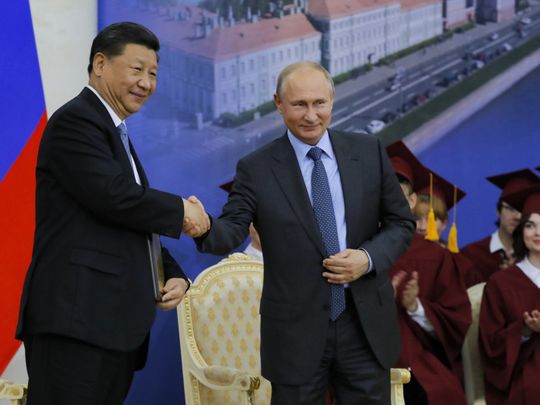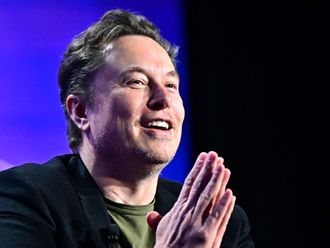
China’s Xi Jinping finished up on Friday night a three-day trip to Russia which saw 30 government and commercial agreements inked, including linking up Beijing’s ‘Belt and Road’ project with the Moscow-led Eurasian Economic Union (EAEU). The success of the visit reflected not just the warmth of the burgeoning bilateral dialogue, but perhaps just as important the current chilliness of both of their ties with the United States.
On China’s side, for instance, relations with Washington have become increasingly frosty following the apparent breakdown of high-level trade talks last month. This follows the decision of both sides to ramp up sanctions after US President Donald Trump accused Beijing of “breaking the [potential] deal” by seeking to roll back what he claims were previous Chinese commitments in areas like state subsidies.
At the same time, the US-Russia relationship remains semi-frozen too. At last month’s meetings between US Secretary of State Mike Pompeo, Putin and his Foreign Minister Sergei Lavrov, the mood music was subdued, albeit with both sides pledging to work with each other where possible.
Boon for Putin
It is in this context that both Beijing and Moscow wish to work together not just to further bilateral interests, but also hedge against the prospects of a continuing chill in US ties under the Trump presidency. In Russia’s case, however, it is not just the United States, but also other key western powers with which its relations are significantly strained right now.
This follows years of sanctions over Ukraine and Crimea, as well as concerns over Moscow’s alleged extensive meddling in a suite of western elections. Plus the attempted murders in England of former Russian spy Sergei Skripal and his daughter, which have been widely blamed, internationally, on Moscow.
Following quickly on the heels of Putin’s to China in April, comes as Xi asserted again in recent days that bilateral relations are at a historical high, and also praised Putin as his best political friend.
This reflects the fact that some two decades after first assuming power, Putin has restored Russia’s geopolitical prominence, including through gambits such as the annexation of Crimea and the Syria intervention, and this has — so far — played well domestically for him. Yet, this has been mirrored by frostier ties with leaders in multiple key countries, including in much of Europe.
Putin has therefore decided to increasingly assert Russian power in other areas of the globe from Africa to Asia-Pacific. Take the example of Japan where he has met frequently with Shinzo Abe to try to foster joint economic activities in the disputed islands off Japan’s northernmost main island of Hokkaido.
Yet, it is Xi with whom the Russian president has formed the strongest relationship. This week’s state visit, following quickly on the heels of Putin’s to China in April, comes as Xi asserted again in recent days that bilateral relations are at a historical high, and also praised Putin as his best political friend.
Geopolitical and security gains
Perhaps the most cited area of these warmer ties, with both Xi and Putin expected to be in power well into the 2020s, is on the geopolitical and security front. For instance, this week it was agreed by the two that China’s ‘One Belt One Road’ project will be integrated with the EAEU, which comprises Russia, Armenia, Belarus, Kazakhstan and Krygystan.
However, China and Russia also enjoy a, wider extensive economic dialogue which has deepened since Moscow’s annexation of Crimea. This includes the commercial deals signed this week, including Russia’s biggest mobile operator MTS agreeing that Huawei could develop the nation’s 5G network.
There are also bilateral plans for numerous cooperation projects with China including a new method of inter-bank transfers, and a joint credit agency that seeks to create a shared financial and economic infrastructure that will allow them to function independently of western-dominated financial institutions. China and Russia are also among the states involved in creating alternative forums to the World Bank and International Monetary Fund, including the New Development Bank which will finance infrastructure and other projects in the Brics (Brazil, Russia, India, China and South Africa) states.
Moreover, in the energy sector, the two states have signed a $400 billion (Dh1.47 trillion) natural gas supply deal which will see an approximately 2,000 mile (3,218km) gas pipeline from eastern Siberia to north-east China. And they have agreed to construct a second major gas pipeline from western Siberia to China’s Xinjiang province.
Common positions on global issues
The boost to the bilateral cooperation agenda has helped enable work towards stronger, common positions on key regional and global issues too. This includes North Korea, which both Russia and China share land borders with and have been long-standing allies.
In the context of the recent meeting between Putin and North Korean leader Kim Jong-un, Pyongyang was also a significant theme of the Russia-China bilateral talks. Beijing and Moscow cautiously welcomed the Singapore and Vietnam summits between Trump and Kim, but they are also now concerned that they don’t become passive bystanders, wanting instead reinforce their interests as key players in the grand geopolitical game that is now potentially being played out on the peninsula if the peace process does not completely unravel.
Taken overall, with Chinese and Russia relations with the United States looking ever unpredictable under Trump, Putin and Xi are placing increasing emphasis on their partnership. While this is underpinned by a growing economic and geopolitical dialogue, it is also their personal closeness that appears to be underpinning the rejuvenated relationship which may only warm further into the 2020s, a development that would be worrisome for Washington.
Andrew Hammond is an Associate at LSE IDEAS at the London School of Economics









